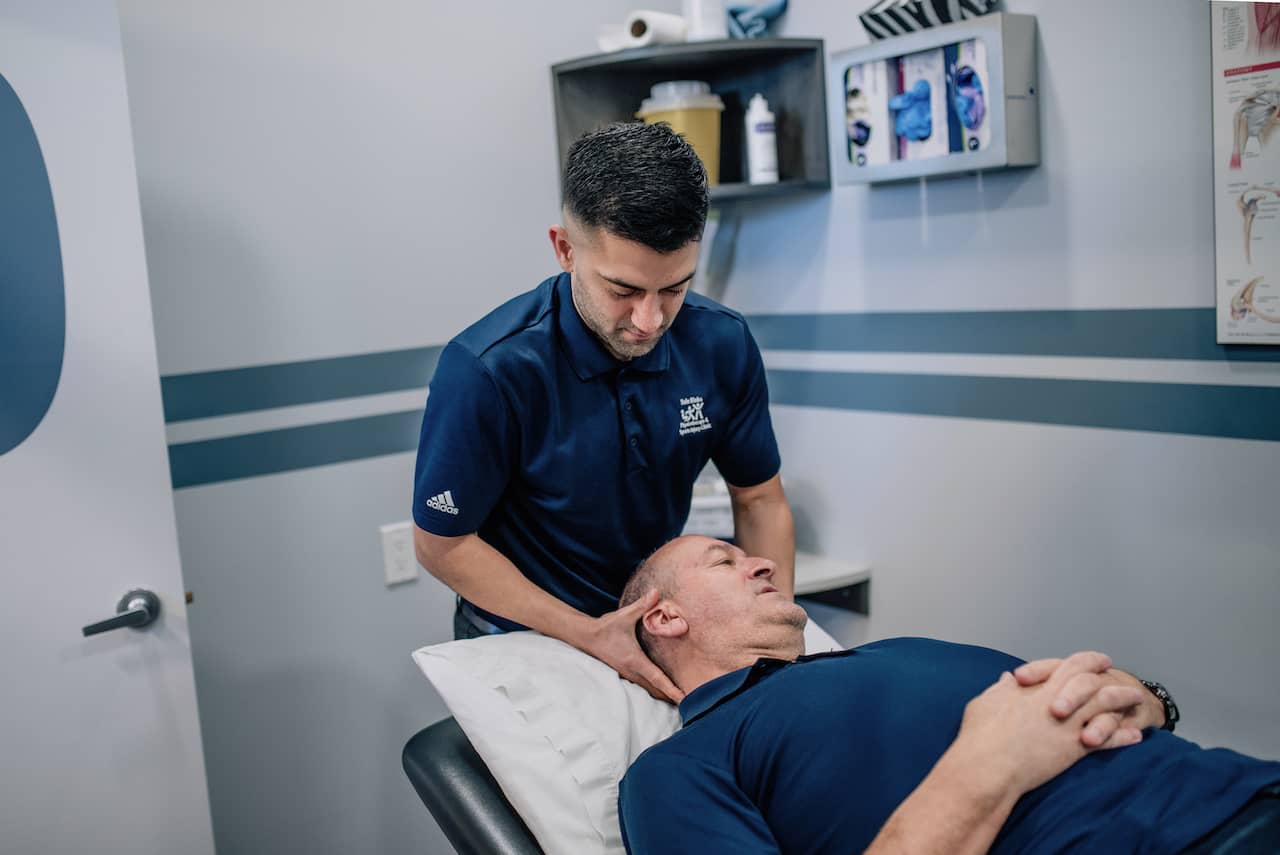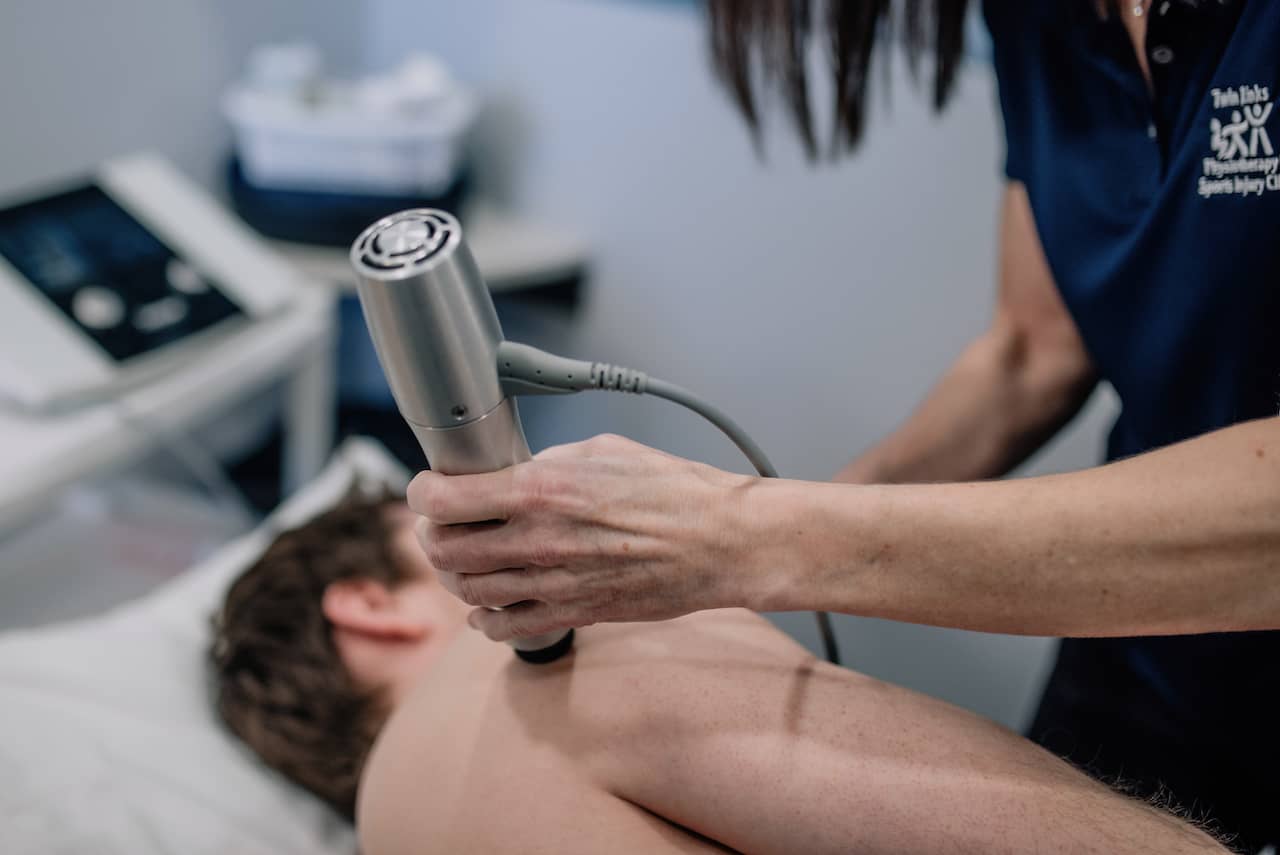General Physio Services
Pelvic Floor Physiotherapy
Pelvic floor physiotherapy is a specialized form of physiotherapy that focuses on the muscles, ligaments, and connective tissues that support the pelvic organs, including the bladder, uterus, and rectum. The pelvic floor muscles play a crucial role in various bodily functions, such as bowel and bladder control, sexual function, and support for the pelvic organs. Pelvic floor physiotherapy is a conservative and non-invasive approach that aims to empower individuals to actively participate in their own recovery.
Symptoms of pelvic floor dysfunction:
- Leakage when you cough / sneeze / laugh or exercise
- No longer run because of unpleasant wetness
- Visit the bathroom more frequently than you used to or not make it to the bathroom
- Have pain in the pelvic area, perineum and or tailbone that is affecting your quality of life
- Have genital / vaginal pain affecting your sex life
- Have reduced sexual sensation
- Struggle with constipation / difficult bowel movements
- Have bulging / heaviness in the perineum
Common Conditions for which pelvic floor physiotherapy may be recommended include:
Pelvic Pain: This can include conditions like pelvic floor dysfunction, vulvodynia, and interstitial cystitis.
Incontinence: Both urinary and fecal incontinence can be addressed through pelvic floor physiotherapy.
Pelvic Organ Prolapse: This occurs when pelvic organs, such as the uterus or bladder, descend into the vaginal canal.
Pre- and Postnatal Care: Pelvic floor physiotherapy is beneficial for pregnant individuals to prepare for childbirth and for postpartum recovery.
Sexual Dysfunction: Issues related to sexual function, such as pain during intercourse, can be addressed through pelvic floor physiotherapy.
Chronic Constipation or Bowel Disorders: Problems with bowel movements can be addressed by working on pelvic floor muscle function.
Musculoskeletal Issues: Pelvic floor physiotherapy may help with musculoskeletal issues such as coccydynia and diastasis recti.
Who benefits from pelvic floor physiotherapy:
Pregnant and Postpartum Individuals: Pelvic floor physiotherapy can help prepare for childbirth and aid in postpartum recovery.
Menopausal and Postmenopausal Women: Changes in hormone levels during menopause can affect the pelvic floor, and physiotherapy can help manage related symptoms.
Individuals with Pelvic Pain: Those experiencing pain in the pelvic region, whether due to injury, surgery, or other conditions, may benefit.
People with Incontinence Issues: Individuals experiencing urinary or fecal incontinence can benefit from strengthening and coordination exercises.
Those with Sexual Dysfunction: People experiencing pain or discomfort during sexual activity may find relief through pelvic floor physiotherapy.
Individuals with Bowel Disorders: Chronic constipation or other bowel disorders that involve the pelvic floor muscles may be addressed through targeted exercises
Pelvic Floor Assessment
A pelvic floor assessment conducted by a physiotherapist is a comprehensive evaluation of the muscles, ligaments, and other structures in the pelvic region. The assessment aims to identify any dysfunction, weakness, or tension in the pelvic floor muscles and surrounding areas. Here’s an overview of what a pelvic floor assessment may involve:
Medical History: The physiotherapist will begin by taking a detailed medical history, including information about any relevant medical conditions, surgeries, pregnancies, childbirth experiences, and current symptoms.
Physical Examination: A physical examination is conducted to assess the strength, tone, and flexibility of the pelvic floor muscles. This may involve internal and external examinations (if you are comfortable with this) to evaluate muscle function, tenderness, and the presence of any trigger points.
Posture and Alignment Assessment: The physiotherapist may assess the overall posture and alignment of the spine, hips, and pelvis to identify any issues that may contribute to pelvic floor dysfunction.
Functional Movement Assessment: Functional movements, such as squats or lunges, may be assessed to determine how well the pelvic floor muscles are coordinating with other muscle groups during daily activities.
Biofeedback: Biofeedback techniques may be used to provide real-time information about muscle activity and help the individual learn to control and strengthen the pelvic floor muscles.
Education: The physiotherapist will often provide education about the anatomy and function of the pelvic floor, as well as lifestyle factors that may impact pelvic health.
Pelvic Floor Treatment:
It’s important to note that the specific treatment plan will vary based on the individual’s condition and needs.
Based on the assessment findings, the physiotherapist will develop an individualized treatment plan. Pelvic floor physiotherapy treatments may include:
Pelvic Floor Exercises: Targeted exercises to strengthen and improve the coordination of the pelvic floor muscles.
Relaxation Techniques: Training in relaxation and breathing techniques to address tension in the pelvic floor muscles.
Manual Therapy: Hands-on techniques, such as soft tissue mobilization and myofascial release, to address muscle tightness and improve flexibility.
Electrical Stimulation: The use of electrical stimulation to activate and strengthen the pelvic floor muscles.
Biofeedback Training: Utilizing biofeedback devices to help individuals gain awareness and control over their pelvic floor muscles.
Lifestyle Modifications: Recommendations for dietary and lifestyle changes that may positively impact pelvic floor health.
Postural and Movement Correction: Strategies to improve posture and movement patterns to reduce strain on the pelvic floor.
Behavioral Strategies: Guidance on bladder and bowel habits to manage issues like incontinence.











